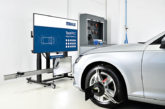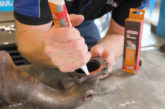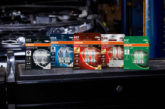
Throttle bodies, MAF and MAP sensors play vital and interdependent roles within modern vehicle engines. Here, Niterra explores these parts and offers technicians guidance on their diagnosis and maintenance.
Whether it be Musketeers, Amigos or airflow components, three really is the magic number. Most vehicles feature three separate parts working together as the quiet heroes of modern engines: the throttle body, the mass air flow (MAF) sensor and the manifold absolute pressure (MAP) sensor.
The throttle body is the gatekeeper, physically controlling how much air enters the engine. The MAF and MAP sensors are the eyes and ears, feeding data back to the engine control unit (ECU). Together, they enable the ECU to strike the delicate balance of air and fuel that underpins performance, efficiency and emissions compliance.
Here we take a deep dive into their individual functions, how they work in harmony and some of the common diagnostic pitfalls to be aware of.
High performing heroes
- Throttle body
The throttle body regulates the volume of air entering the engine. On petrol engines, it responds directly to accelerator input, managing airflow for combustion. On modern diesels, it assists with exhaust gas recirculation and smooths engine shutdown.
Electronic throttle bodies use integrated throttle position sensors (TPS) to provide constant feedback. This allows the ECU to adjust air intake in real time, stabilising idle, optimising fuel efficiency and reducing emissions.
- MAF sensor
Located upstream of the throttle body, between the air filter and intake, the MAF sensor measures the absolute mass of incoming air. Unlike simple volume readings, it provides a real-time, density corrected value, allowing the ECU to inject exactly the right amount of fuel.
In petrol engines, the MAF ensures efficient combustion. In diesel applications, it also communicates with the exhaust gas recirculation (EGR) valve to help reduce nitrogen oxide (NOx) emissions. Most use hot-wire or hot-film technology, which has no moving parts and measures cooling effects of the airflow on a heated element, converting this into an electrical signal.
- MAP sensor
The MAP sensor, found downstream of the throttle body in the intake manifold, measures manifold pressure (or vacuum). At idle, vacuum levels are high, with pressures as low as 300-400 mbar. Under wide-open throttle, manifold pressure rises close to atmospheric, around 950-1000 mbar.
By monitoring these fluctuations, the MAP sensor gives the ECU an accurate picture of the air available for combustion.
On turbocharged engines, boost pressure MAP sensors extend this role further by measuring positive pressure in the intake tract.

The diagnostic challenges
MAF and MAP readings are continuously cross-checked against each other in what’s known as a plausibility check. If one fails, the ECU can substitute its data with a derived value from the other.
When signals don’t align, technicians face a challenge. A vacuum leak downstream of the throttle body, for example, lets in unmetered air. The MAF may report normal values, while the MAP shows higher-than-expected pressure. The ECU spots the inconsistency, flags a fault, and leaves the workshop to identify the cause.
Other issues can be subtler. A contaminated MAF may under-report airflow, while the MAP appears plausible. Conversely, blocked EGR passages or intake restrictions can throw MAP readings off while the MAF looks stable. Understanding these interdependencies is key to avoiding misdiagnosis.
Common throttle body fault codes
Diagnostic trouble codes (DTCs) often point to throttle body faults, but the story is rarely straightforward. Common codes include:
- P0220 – Throttle/pedal position sensor (sensor B) malfunction.
- P2135 – Throttle/pedal position sensor correlation fault.
Here, the ECU compares not just pedal signals with the throttle body’s TPS but also correlates them with MAF and MAP values. A fault in one part of the chain can trigger a throttle-related DTC, even if the throttle body itself is not at fault.
Maintenance and sensitivity
Both MAF and MAP sensors are vulnerable to contamination from oil vapours, dust and carbon deposits. This reduces sensitivity, leading to poor fuel economy, unstable idle, power loss or starting difficulties.
Sometimes, careful cleaning restores function, but the source of contamination must be fixed to prevent recurrence. If replacement is required, OE-quality parts ensure calibration accuracy.
Throttle bodies are equally sensitive. Carbon build-up around the throttle plate canause sticking, while actuator or position sensor failures are common. Most electronic throttle bodies require a calibration procedure after replacement for the ECU to calculate position, timing, and more. Skipping this step risks immediate recurrence of fault codes.

A complete solution
Throttle bodies, MAF and MAP sensors form a chain. Each has a distinct role, but their data is interlinked. A healthy system depends on every link being accurate and reliable.
Niterra’s NTK Vehicle Electronics brand now offers all three critical airflow components in its aftermarket portfolio. The new throttle body range, launched with 74 part numbers covering 12.5 million vehicles, joins NTK’s established MAP and MAF ranges.
With OE pedigree, NTK sensors and throttle bodies deliver the precision, durability and compatibility that technicians demand. Stocking parts from a single brand ensures consistent calibration, reliability and simpler diagnosis when airflow faults strike.
Airflow control is a three-part story. The throttle body regulates, the MAF measures mass, and the MAP monitors pressure. Individually, they are high performers. Together, they form the balanced ecosystem modern engines rely on.
For technicians, mastering the relationships between these components is the key to faster, more accurate diagnosis – and fewer costly comebacks. By combining sound practice with OE-quality parts, workshops can ensure that engines continue to purr, mile after mile.









